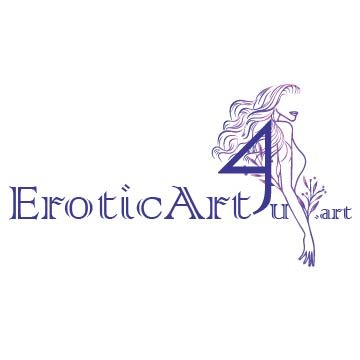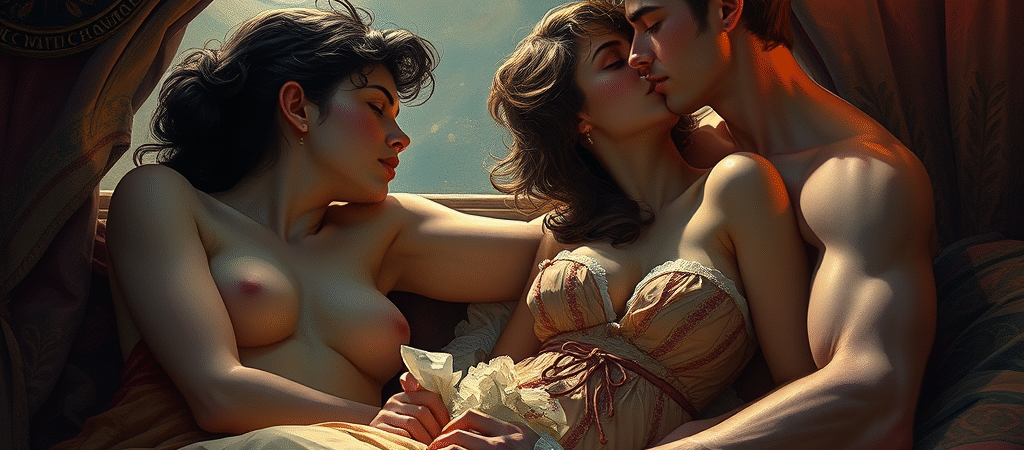The early 19th century was a complex period for erotic art, marked by a tension between Enlightenment ideals, Romanticism, and the emerging strict moral codes of the Victorian era. Artists navigated these conflicting influences, producing works that ranged from the subtly suggestive to the overtly explicit, often circulated privately due to prevailing censorship laws.
Cultural Context
During this era, societal attitudes towards sexuality were in flux. While the Enlightenment had encouraged a more open exploration of human nature, including sexuality, the rise of Victorian morality imposed stricter controls on public expressions of eroticism. Consequently, erotic art often found itself relegated to private collections or clandestine publications, serving both as a form of personal indulgence and subtle rebellion against societal norms.
Styles and Mediums
Erotic art in the early 19th century manifested in various forms:
- Engravings and Lithographs: These print mediums allowed for the discreet reproduction and distribution of erotic imagery.
- Watercolors and Paintings: Artists created intimate scenes, often for private patrons, exploring themes of love, desire, and sensuality.
- Illustrated Books: Literary works with erotic content were accompanied by illustrations that enhanced the sensual narratives.
Notable Examples
1. Thomas Rowlandson (1757–1827)
An English artist renowned for his satirical and erotic drawings, Rowlandson’s works often combined humor with explicit content. His series Pretty Little Games for Young Ladies & Gentlemen is a prime example, featuring hand-colored prints that depict various amorous escapades with a comedic twist. These works were typically accompanied by rhymed verses, adding a literary flair to the visual content.
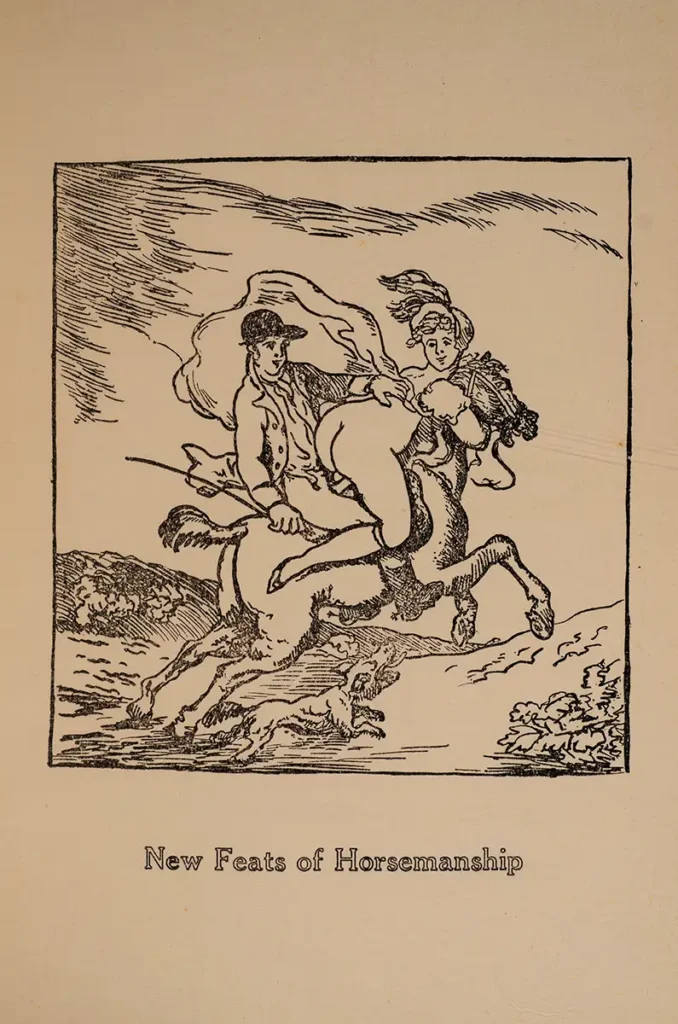
2. Jean-Honoré Fragonard (1732–1806)
Although primarily associated with the Rococo period, Fragonard’s influence extended into the early 19th century. His painting The Bolt (Le Verrou, 1777) is a quintessential example of erotic art from this transitional period. The artwork portrays a passionate embrace between lovers, with the male figure securing the door bolt, symbolizing both physical and emotional intimacy.
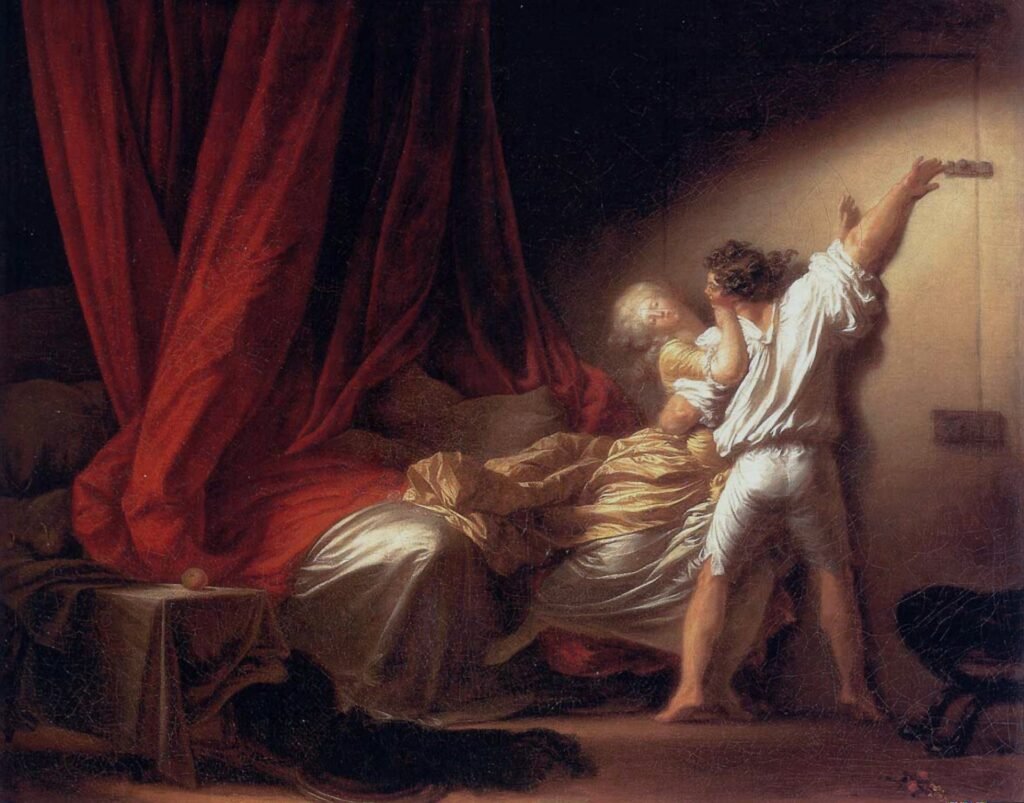
3. Katsushika Hokusai (1760–1849)
A master of Japanese ukiyo-e, Hokusai’s work The Dream of the Fisherman’s Wife (1814) stands out for its explicit depiction of a woman engaged in a sensual encounter with two octopuses. This shunga (erotic print) challenges Western notions of eroticism, blending fantasy with a candid portrayal of female pleasure.
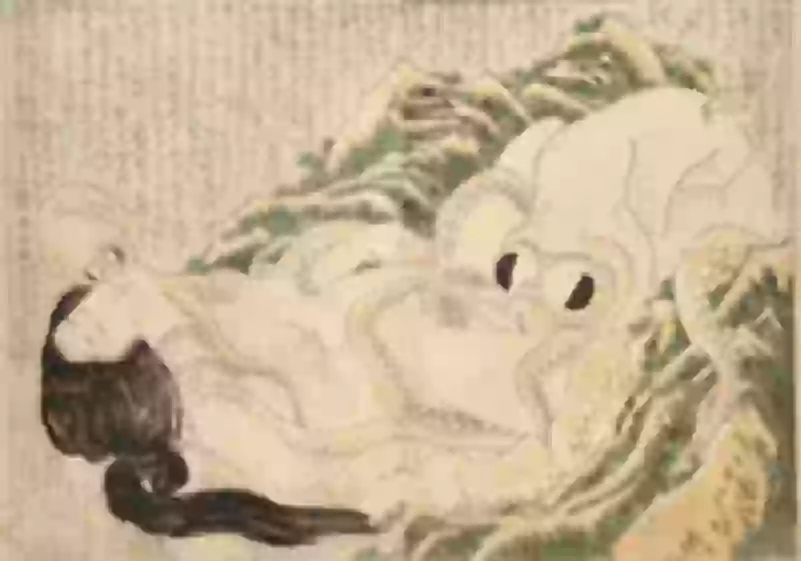
Censorship and Legacy
As the 19th century progressed, censorship laws became more stringent, particularly in Britain with the Obscene Publications Act of 1857. This led to the suppression of many erotic works, pushing them further into the private sphere. Despite this, the erotic art of the early 19th century laid the groundwork for future explorations of sexuality in art, influencing movements that sought to challenge and redefine societal norms around desire and the human form.
Figured I would start with a little something simple from the early 18th Century. I will likely take a step back even further on the next post.
Have a Great Day!
Erotic Art 4U
